Creating art can be transformative and healing, allowing for expression in ways sometimes words can’t or fall short. Experiencing art can be equally cathartic.
Light plays a role in the creation and experience of art. Humans are phototrophic by nature, meaning we grow toward light. Art can use light to create depth, detail and atmosphere, and to convey emotion or to make a statement.
Artists have always used light to emphasize certain aspects of their works of art. How light bathes a basket of fruit, for example, or shines on a pearl earring, can accentuate an artwork’s attributes. The contrast of darkness with lightness can be alluring. Chiaroscuro, for example, is a technique using a stark contrast between light and dark to create dramatic compositions, most famously used by artists such as Caravaggio, Rembrandt and Goya. In modern and contemporary art, only the medium has changed.
In the 20th century artists began to use light itself as art. Light art, as it’s come to be known, can take multiple media forms, including sculpture, installation and performance. Installation lights artists use light color, intensity, filters, angles and shadows to create their works. You may have seen more of what’s called light art than you realize; neon signs, holographic images projected on a building, abstract light fixtures or light sculptures. Light art dominates museums as well as commercial and residential spaces, making it a prominent and accessible art form.
Table of contents
Background on light art
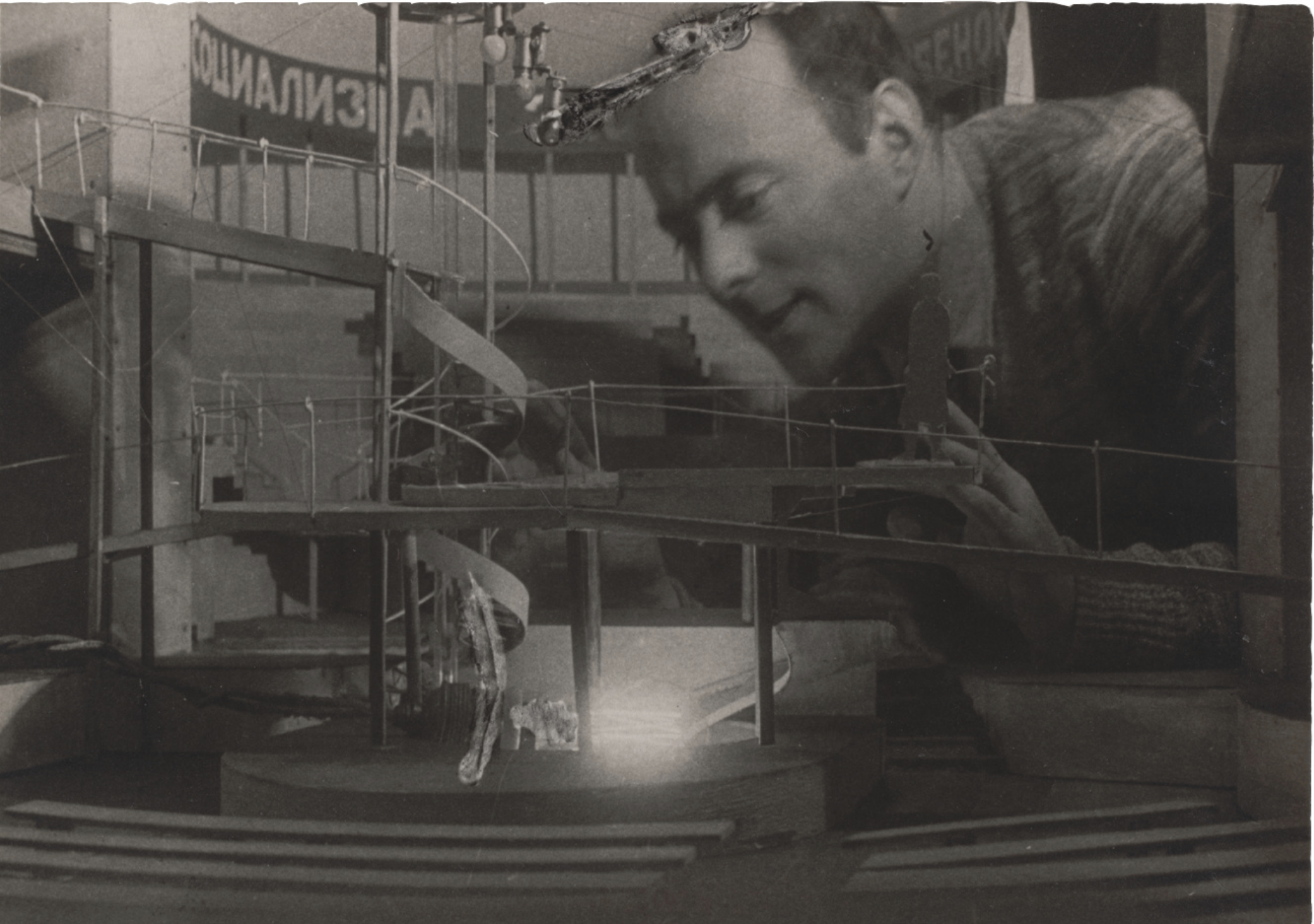
The light bulb was invented in 1879. Yet it’s believed that an artist named El Lissitzky is the first to have used electrical light in his work — 60 years later. One of the first object-based light sculptures was made by Laszlo Moholy-Nagy in the 1920s.
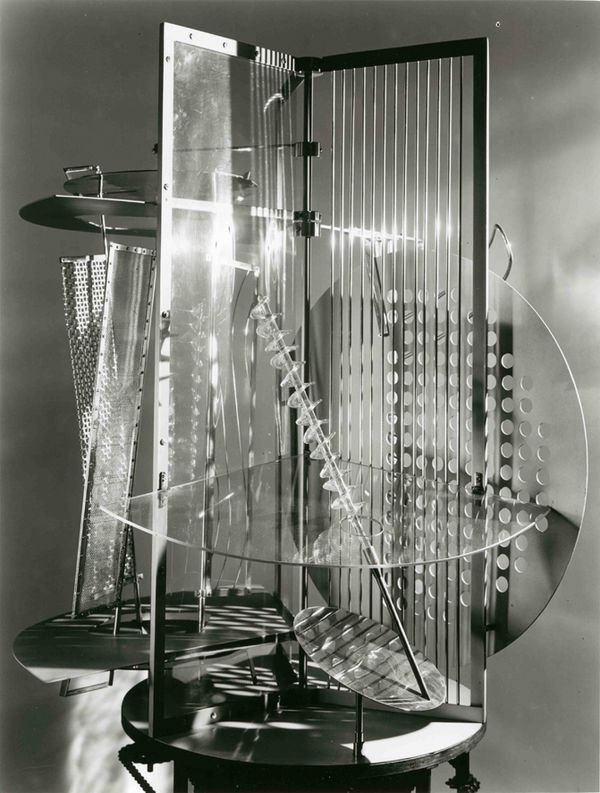
But using light in art goes back to ancient culture.
“The interplay of dark and light has been a theme running from Greek and Roman sculpture to Renaissance painting to experimental film,” explained art critic Hilarie M. Sheets. “As technology advanced from the glow of the electric light bulb to the computer monitor, artists have experimented with actual light as material and subject.”
From bulb to projection
Light art as it’s known today originated in the 1960s as kinetic, or Lumino kinetic, art. In later forms, some artists used light to create psychedelic experiences. From that movement came minimalism, with artists such as the late Dan Flavin, who worked with fluorescent light tubes, playing with light as it relates to sculpture, movement and various spaces.
Neon took the light art scene in the 1980s. During this decade, electric neon lights resurged as part of the arts scene. Artists began using neon in interior design and sculpture in an effort to push boundaries.
The newest light art trend is projection mapping, which projects video onto an object, or wall. When shown against three-dimensional objects, a projected video employs color, light and movement to give the appearance of transforming a static object into something almost lifelike.
Light artists
Many artists have gained notoriety using light as an artistic medium. From public space exhibitions to museum showcases, light art uses everyday encounters to express an experience, a thought or an emotion. Most notable among artists using light:
Ellsworth Kelly
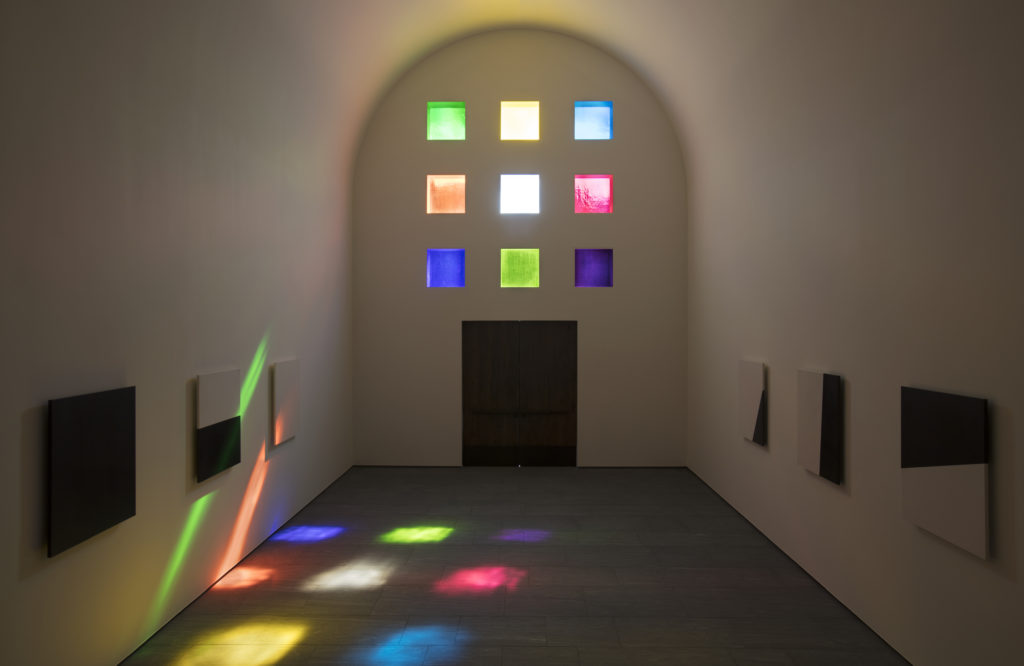
Ellsworth Kelly was an American painter, sculptor and printmaker in Spencertown, New York associated with Color Field painting and minimalism. His techniques emphasize line, color and form. Kelly often used bright colors.
Dan Flavin
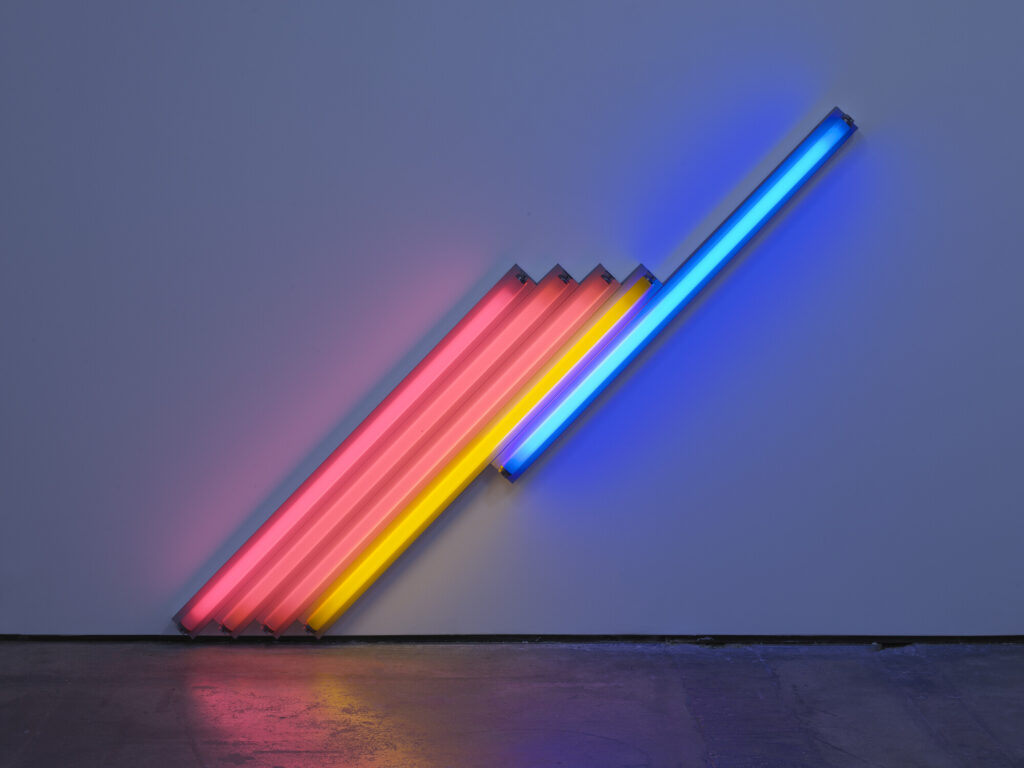
Following the kinetic movement of the 1960s came the minimalism movement. Dan Flavin pioneered the use of fluorescent lighting tubes in his sculptural and installation light art. Flavin’s first professional installation using the fluorescent tube light was in 1963. The work was named Diagonal of Personal Ecstasy and it featured a yellow fluorescent placed on a wall at a 45-degree angle from the floor.
Mona Hatoum
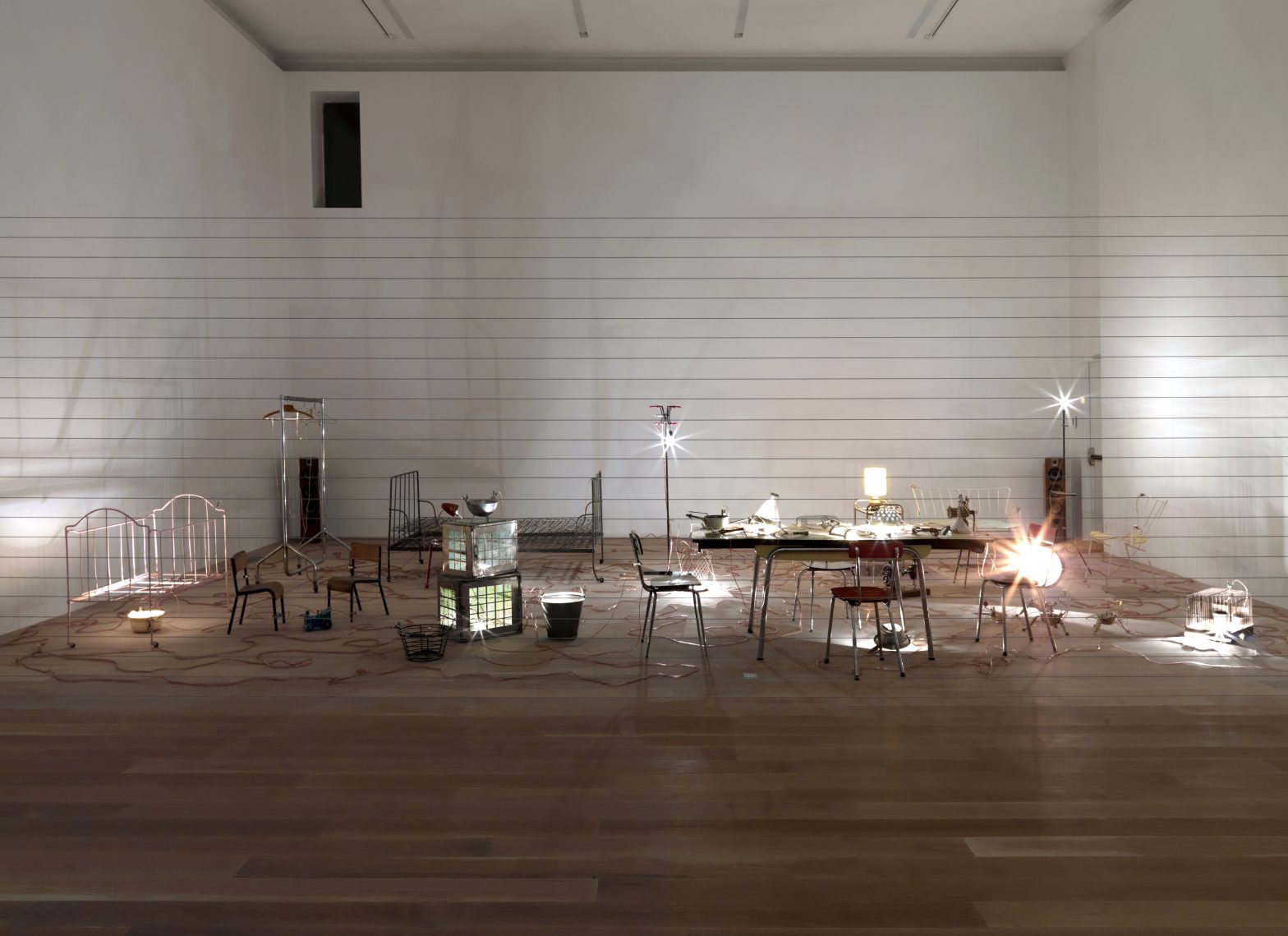
Mona Hatoum’s Terra Infirma comprises more than 30 sculptures and installations. Hatoum’s work often references domestic and everyday objects with themes of home and displacement, global instability and political upheaval.
Adela Andea
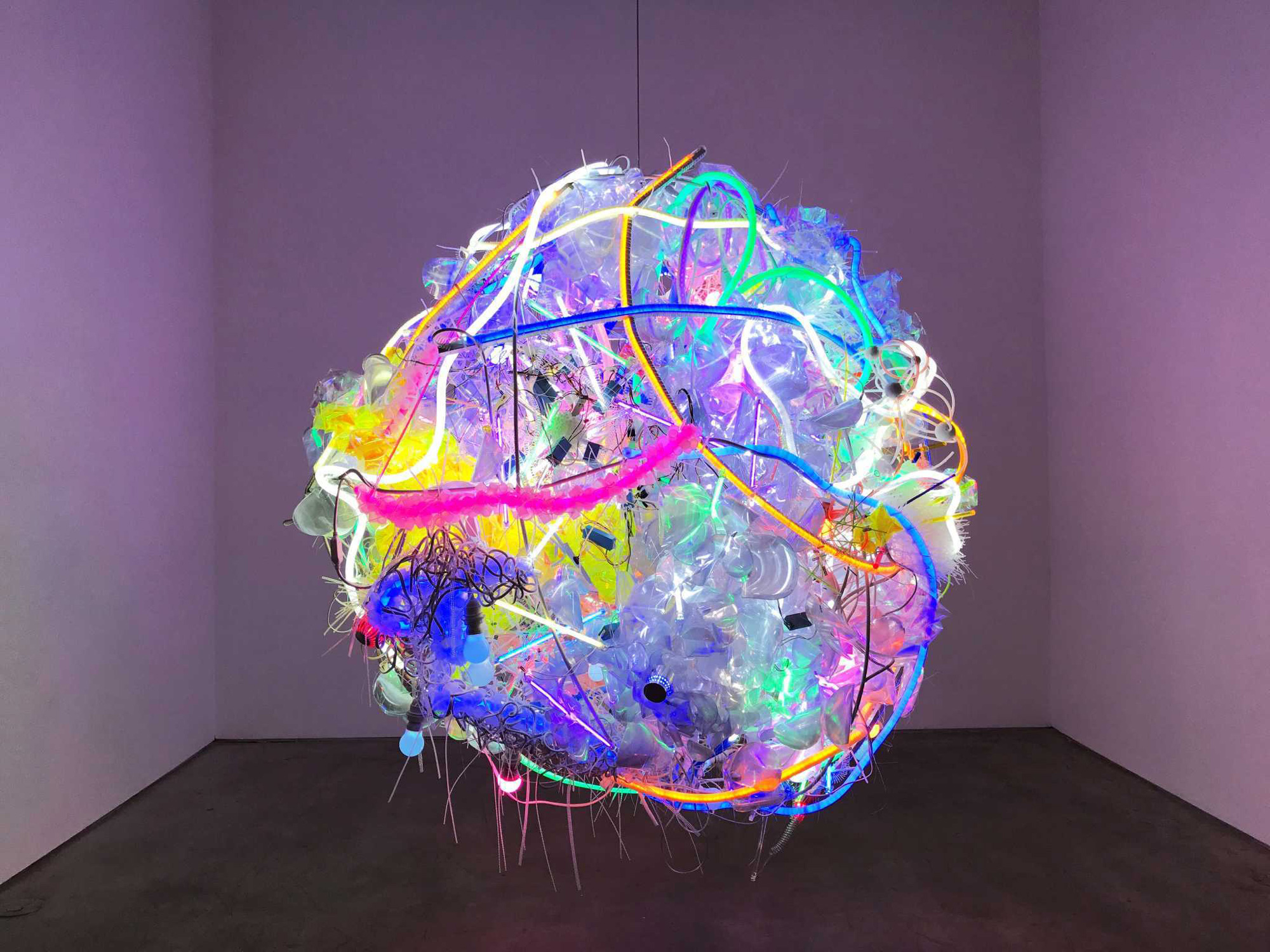
Romanian-born artist Adela Andea uses LED light and space, magnifying lenses and flexible neon tubes to immerse viewers in a sensory experience.
Lucio Fontana
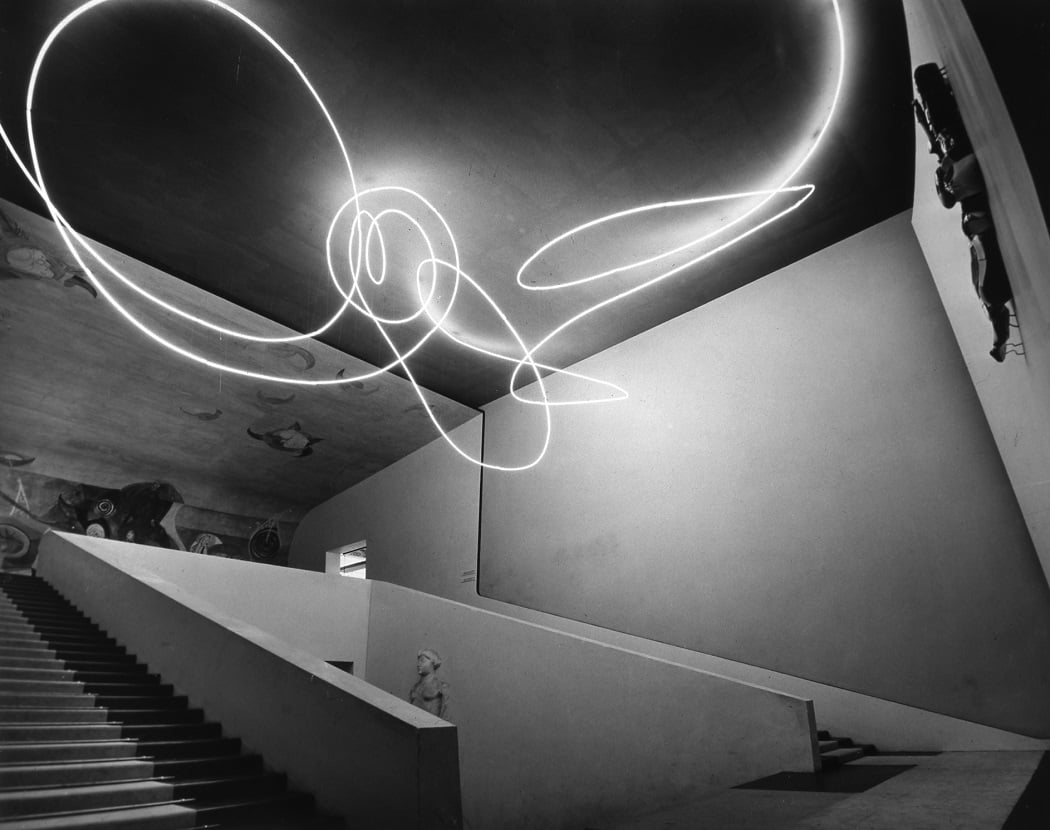
This aerial sculpture—100 feet of neon tubing looming overhead—now hangs in the Museo Novecento in Milan, Italy. Giant windows entice you to look out onto the famous Duomo, yet, your eyes are drawn to Fontana’s Structure in Neon for the 9th Milan Triennial at the Palazzo dell’Arte, Milan 1951 titled after the place where it was originally installed. Fontana’s light art combined what he referred to as ‘spatial concept” and “spatial environment.”
James Turrell

Among James Turrell’s pieces is this installation at the Guggenheim Museum in New York, where Turrell used shape and light to immerse the visitor in purple. Turrell demonstrated here that light doesn’t have to be static or displayed on a wall—he shows that light can merely be part of an experience.
Jenny Holzer
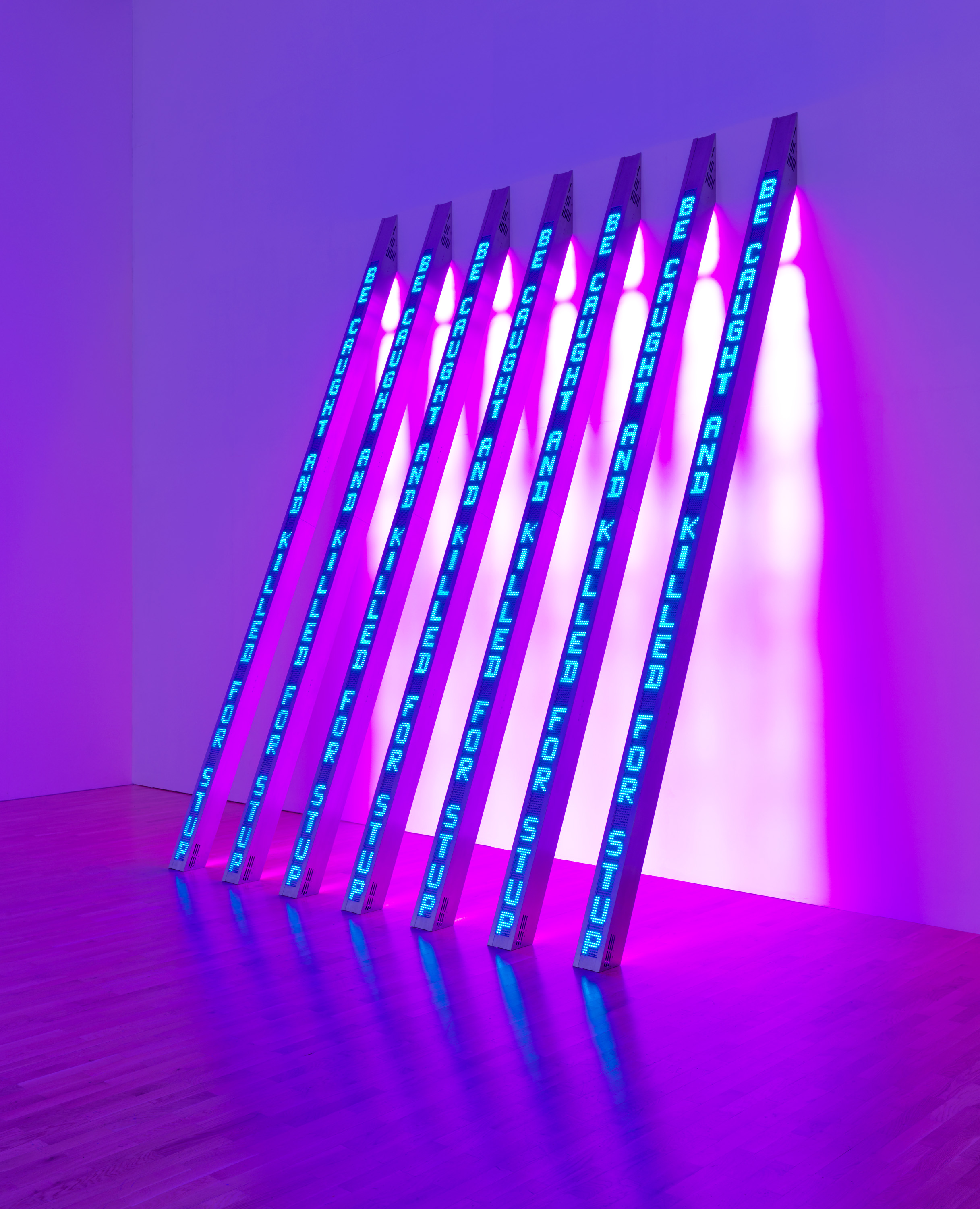
In this piece, Jenny Holzer makes a statement about power by using light on words from declassified U.S. government documents. Her piece was displayed in the Whitney Museum, but Holzer’s work has been exhibited in many places, including Times Square.
Gunda Foerster
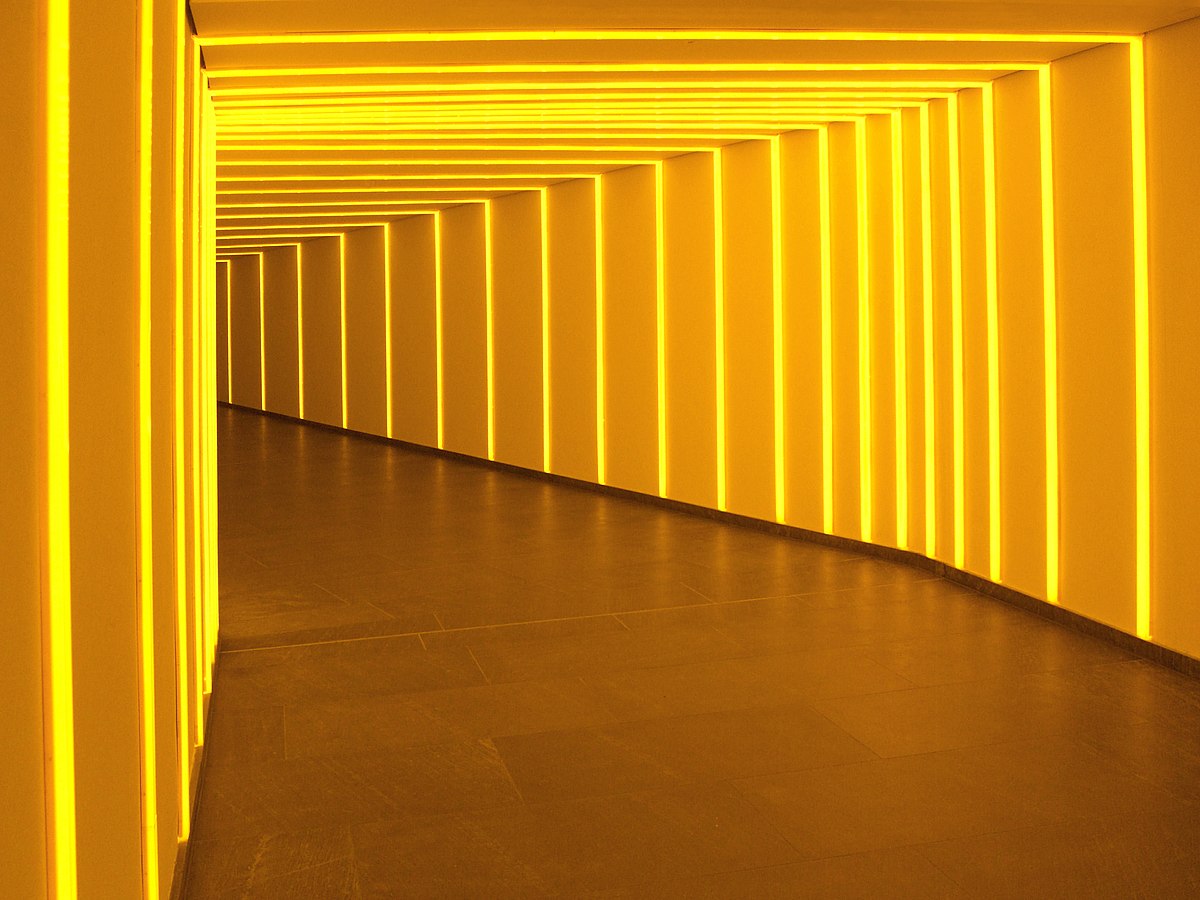
Gunda Foerster strays from post-minimalistic light, evoking a sense of awe and alienation. This piece, shown in Berlin, is called TUNNEL. Fluorescent yellow bulbs light and surround the hallway, emphasizing color, neon and unnatural light.
Ben Rubin

By spelling words with light, Ben Rubin made a mark on the light art scene. With a multimedia background, Rubin used vacuum-fluorescent bulbs to display text from a chat room in real-time. By using dark and light from within a specialized light bulb, he created a unique piece.
Jim Campbell

Jim Campbell created this piece, titled Eroding Wave, in 2016. The editor-in-chief of Artnet Andrew Goldstein hailed it as, “a cascade of lights that crescents over the viewer like breaking waves.”
Rafael Lozano-Hemmer
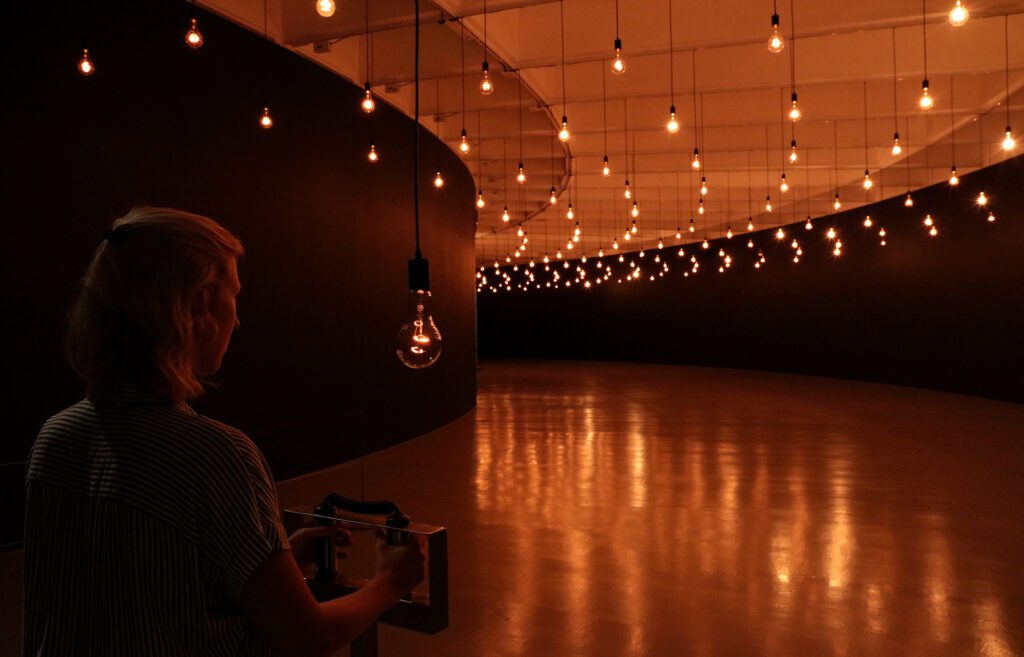
Using lights, robotics, LED screens and film projections, Rafael Lozano-Hemmer alters how people interact within a space. Featured here is his piece Pulse Room, where hanging incandescent light bulbs flash at the same rate as a visitor’s heartbeat when they hold on an interface placed inside the room. Light can alter one’s mood. When tied to a heartbeat, light can leave the visitor with a stronger sense of awareness.
Angela Bulloch
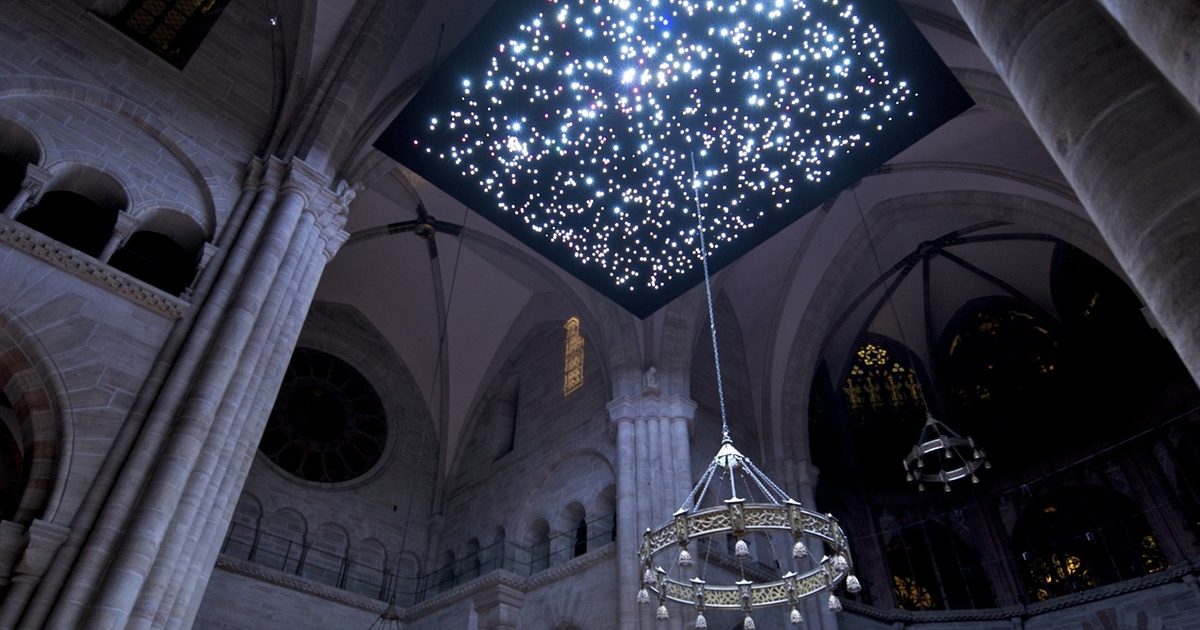
With a different approach than her peers, Angela Bulloch combines light art with mysticism. The Munster Cathedral displayed Bulloch’s Night Sky: Mercury & Venus above the altar. The juxtaposition pits the modernity of LED lights against stained glass.
Olafur Eliasson
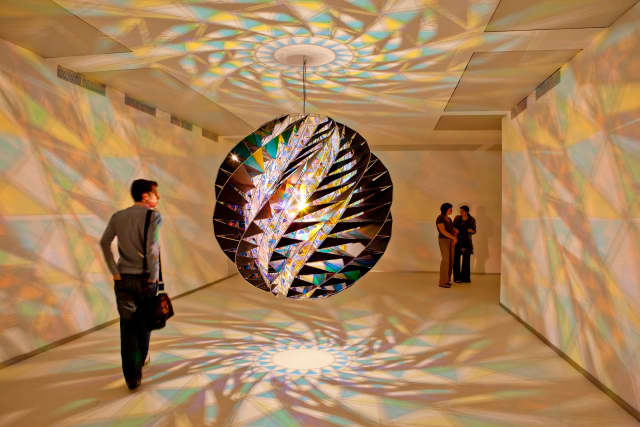
Installed at Pinchukartcentre in Ukraine’s historic city, Kyiv, in 2011, Danish-Icelandic artist Eliasson’s inspiration for Lamp for Urban Movement is shadows and light and how the difference creates space. “Let’s say that the spheres are machines that create space,” Eliasson says. “Some of them contain a light source inside that projects fragmented light out into the space where they are hanging, like a map projection. So it is not only, or primarily, the physical object in the space that interests me, but the way the light and the shadows and the colors claim and create space together. They perform architecture, you might say.”
Grimanesa Amorós
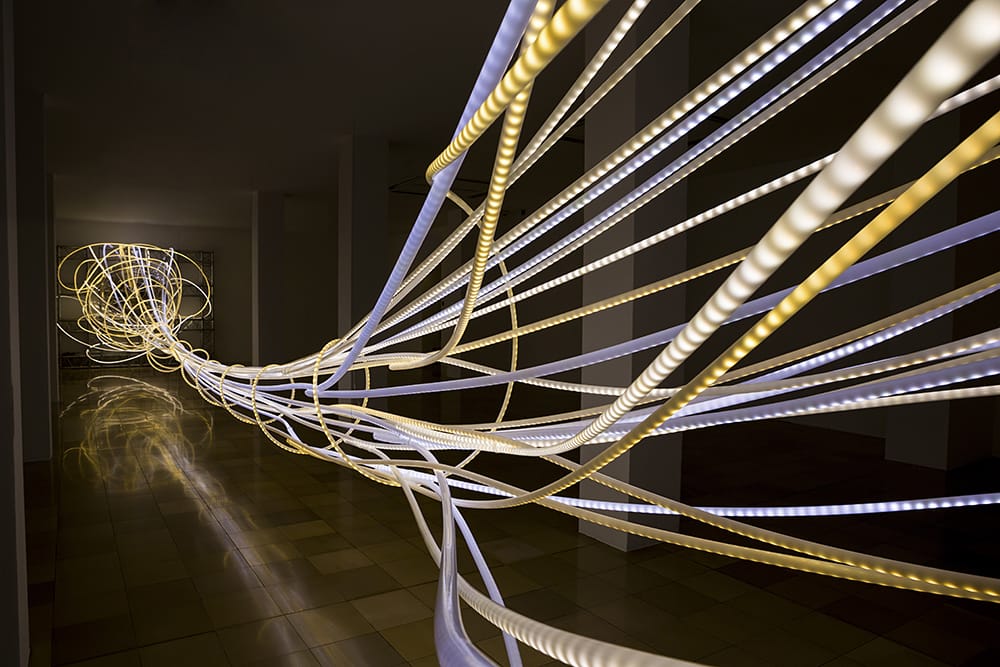
Peruvian-born Grimanesa Amorós lives and works in New York City as an interdisciplinary artist known for large-scale installations of light sculpture. Amorós first researches locations, histories and communities of her sites, and incorporates various elements from video, lighting and technology to create site-specific installations to engage architecture and create community.
Keith Sonnier
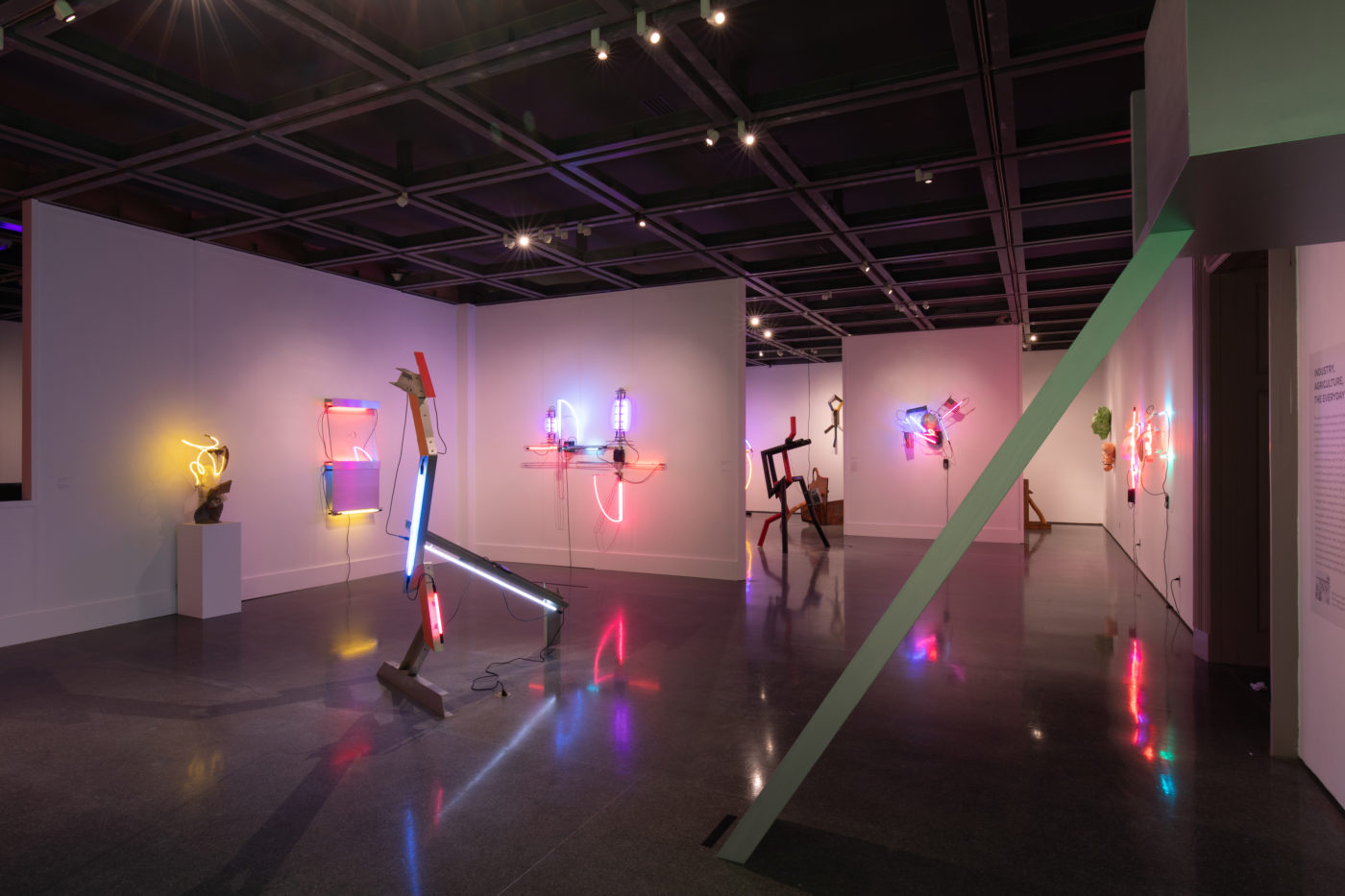
Keith Sonnier is a Postminimalist video and light artist. In 1968, Sonnier created his first artwork using neon. A neon tube is a sealed glass tube with a metal electrode at each end, filled with one of a number of gases at low pressure.
He has been one of the most successful with this technique. Over the years, Sonnier has used incandescent, fluorescent, as well as LED lighting. Sonnier’s pieces tend to include light tubes, aluminum and other objects to create electric light sculptures.
LED innovation in light art
As LED lighting technology evolves, it affords light artists a broader range of control over the light used in art installations. For example, RGBW color tuning allows artists to set specific colors for light within a piece and change colors as desired. IoT lighting provides voice-control, allowing the artist or exhibit visitors to control lighting with voice commands.
Light art tells a story
In fact, it tells quite a few. Modern artists have leveraged this relatively new technology to play on an age-old fascination humans have with art and light. By experimenting with color and shape and intertwining its existence with outside materials, our public spaces and our museums, light art challenges the way we perceive the things around us.
Alcon Lighting creative director and co-founder David Hakimi works to improve lighting through research, development and education. David strives for efficiency in lighting, affording architects, lighting designers and engineers the ability to maximize LED lighting design and application. David is a graduate of the University of California, Los Angeles, where he received a Bachelors in history. David also studied lighting design at IES in Los Angeles. He traces his and Alcon Lighting’s commitment to innovation, accountability, quality and value to lessons learned from his father, Mike Hakimi, a lighting craftsman, salesman and consultant in Southern California for more than four decades. Today’s lighting for commercial use requires a deep, complete understanding of smart lighting systems and controls. David takes pride in his lighting, energy controls and design knowledge. He is driven by the desire to share his insights into lighting specification and application. This quest to share his knowledge was the impetus for David to create Insights, Alcon Lighting’s blog and resource center for helping the reader understand lighting and its application to space.

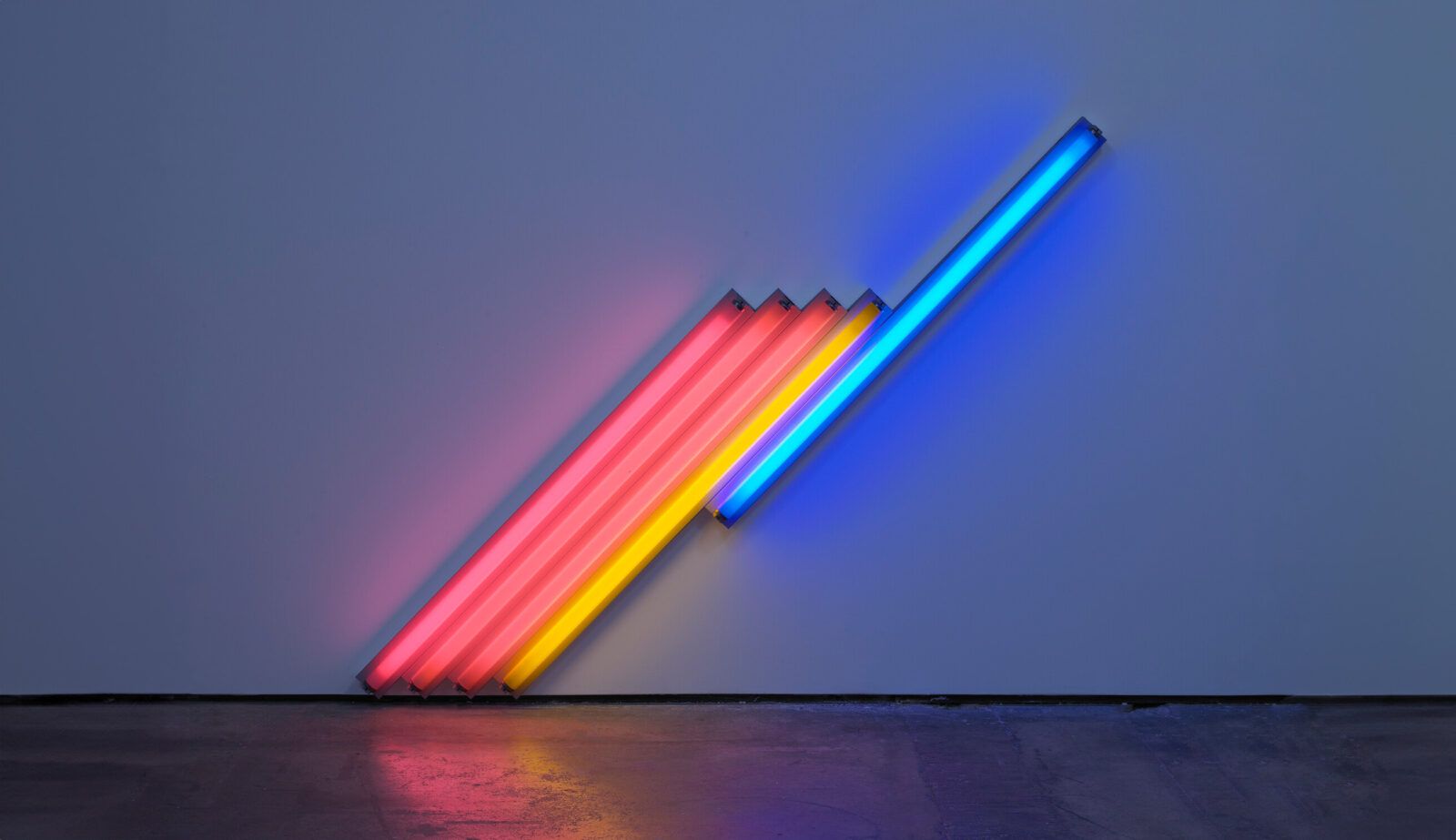
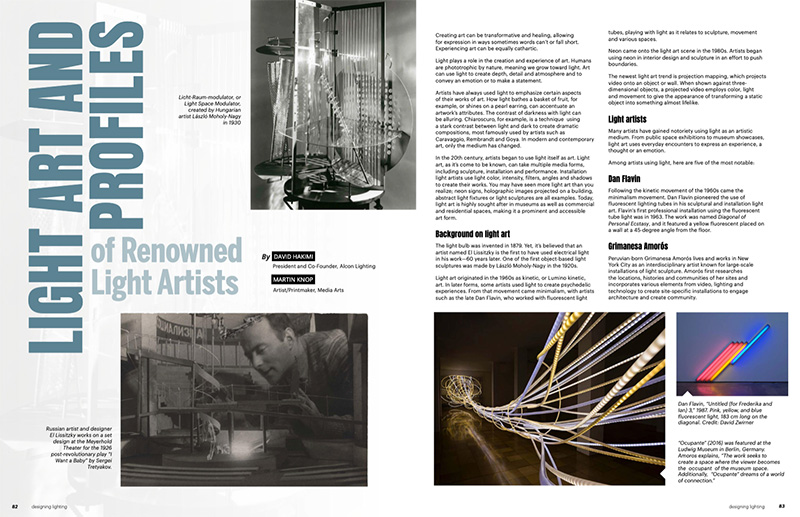

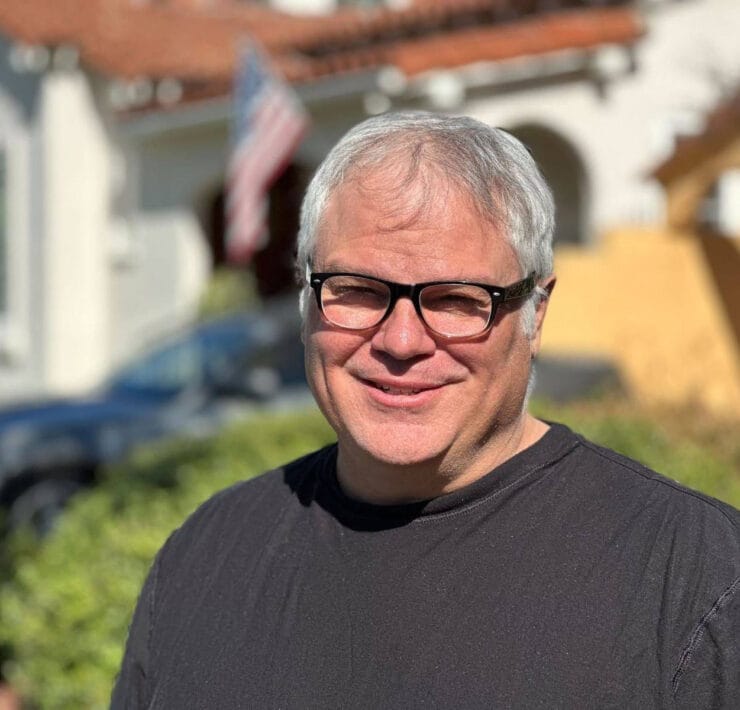
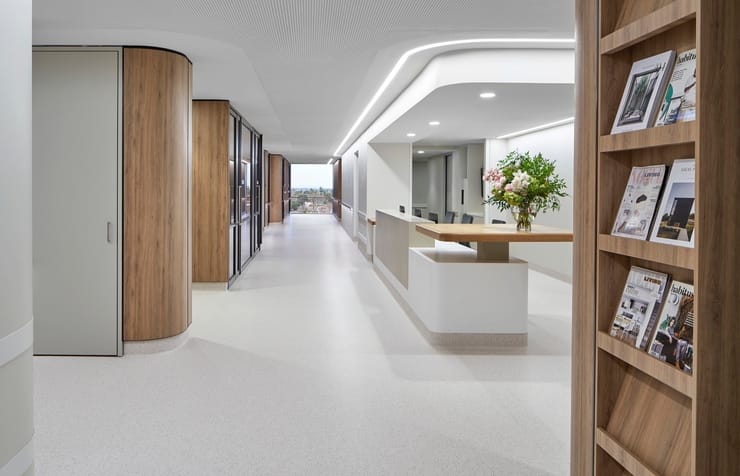
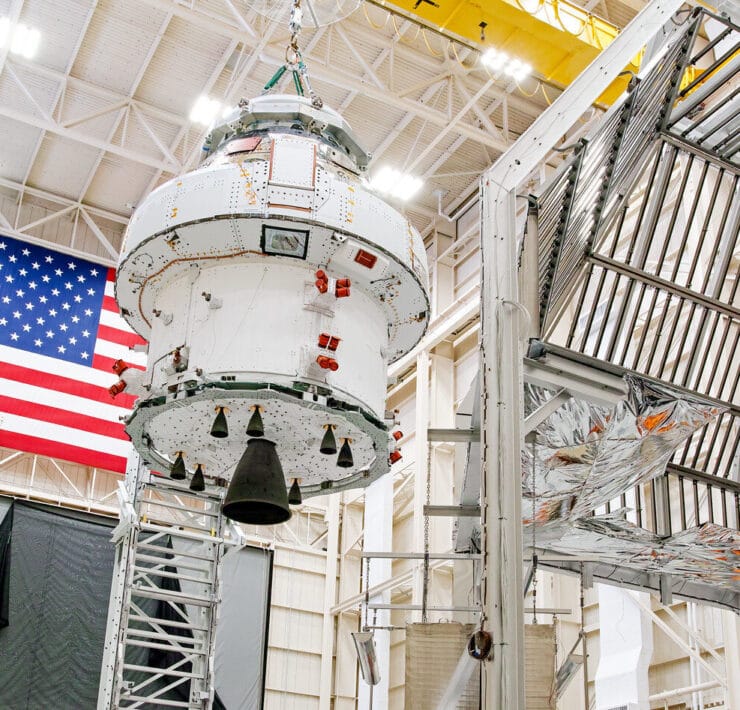
Great Article!
Humans are not phototrophic. And even so, it doesnt mean they grow towards light, but use the light to create energy. I speak on behalf of my client, chlorophyll.